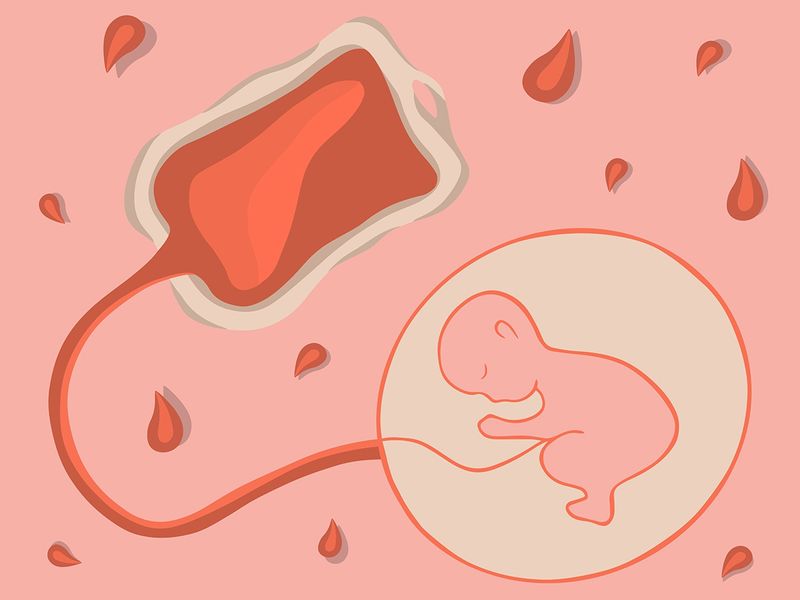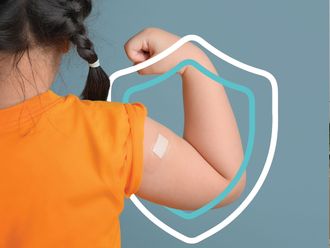
Dubai: Babies bring new life into this world, but did you know that their birth can also offer hope to others? The science of cord blood banking harnesses the power of umbilical cord blood, rich in stem cells that can treat life-threatening diseases.
On Tuesday, May 14, the region’s largest hybrid cord blood bank was launched in Abu Dhabi. The Abu Dhabi Biobank, announced during the Abu Dhabi Global Healthcare Week, will have a capacity to store 100,000 cord blood samples, helping save lives in the UAE and across the world.
The best part is that you can play your role in contributing to this healthcare initiative, by donating cord blood. Here’s what you need to know about cord blood banking – what is it, why it is done and how you can donate.
What exactly is cord blood banking?
It is the process of collecting and storing the blood from the umbilical cord after a baby is born. Dr Asma Al Mannaei, the Executive Director of Research and Innovation Centre at the Department of Health Abu Dhabi, highlighted the significance cord blood holds in aiding future medical treatments.
“This blood is rich in stem cells which offer a valuable resource for potential future medical treatments and therapies. It has the potential to help everybody, including children, by providing a source of cells for medical treatments. These stem cells can be used to regenerate and replace damaged cells, which is particularly beneficial in treating various diseases and conditions, including leukaemia, lymphoma, genetic disorders, and certain immune system disorders. Additionally, ongoing research is exploring the potential of cord blood stem cells in regenerative medicine for conditions such as cerebral palsy, autism, and spinal cord injuries,” she said.

This blood is rich in stem cells which offer a valuable resource for potential future medical treatments and therapies. It has the potential to help everybody, including children, by providing a source of cells for medical treatments.

Dr Summia Zaher, a consultant in Obstetrics and Gynaecology and Medical Director at Danat Al Emarat Hospital, also spoke to Gulf News on the sidelines of the Abu Dhabi Global Healthcare Week, on how the umbilical cord, which is usually discarded after child birth, can be a treasure trove of life saving cells.
“[Cord blood] has saved lives here in the UAE of children who would have died otherwise. You can utilise it to potentially save somebody else's life and we are here now trying to harness the potential of stem cells to actually protect the future of the nation’s health and each one of us has the ability to influence that,” Dr Summia said.
How is cord blood collected?
If you are curious about the process, it is simpler than you think.
“After your baby is delivered, the umbilical cord is clamped and cut. Blood is collected from the umbilical cord and the placenta into a sterile bag with a blood thinner to stop it from clotting. No blood is taken from your baby, it can be taken after a vaginal delivery or a Caesarean section (C-section) delivery, so it doesn't impact what kind of delivery you have,” Dr Summia said.
Does delayed cord clamping affect cord blood donation?
Some mothers may inform the birth team to delay the cord clamping to allow beneficial blood cells to get through the cord to the baby. However, even in such cases, you can go on to donate cord blood.
“Delayed cord clamping will affect the amount of blood that can be collected but it doesn't mean that no blood can be collected. It’s just that the blood that is collected is significantly reduced the longer you delay cord clamping. However, you can still do both, thereby giving your baby the best of the cord blood that it receives and also saving a future life. So, you can have the best of both worlds.”
How can I donate cord blood in the UAE?

UAE residents have two main options when it comes to donating cord blood. The first is through private cord blood banking, in which you request the hospital that is handling your case to store the cord blood for future use. However, in such cases, the cord blood can only be used by your family. Alternatively, you can choose to donate the cord blood to a public bank, like Abu Dhabi Biobank, making it available for anyone who may benefit from it.
“Parents should know that cord blood banking is a one-time opportunity, typically done at the time of birth. As cord blood stem cells offer a valuable resource for potential future medical treatments and therapies, parents can choose between storing through private contracting for personal use or public cord blood and tissue donation, which is currently available under Abu Dhabi Biobank,” Dr Asma said.
Public banks may also be a better option, given that in a majority of cases, the cord blood may not be required by the immediate family, according to Dr Summia.
“Unless you have a known genetic condition in your family, it is extremely unlikely that you would ever use that blood and 90 per cent of blood samples are thrown away. The Abu Dhabi Biobank is an initiative where the cord blood donation is to a public bank that can be used by the entire country [citizens and expats] and, in fact, globally. It can be accessed by many, many patients who need that second chance of life. So, we encourage donation to a public bank where it will be available for all of the nation's health and the likelihood if you or your family member were to require stem cell transplants then there would be a match from that public bank,” she added.
Ready to make a difference? Here are the steps to follow
The process of donating cord blood is as easy as speaking to your obstetric provider between 28 to 34 weeks of pregnancy. They will talk you through the process and also assess whether or not you are suitable to donate cord blood.
“For example, if you or your partner have an infectious disease or if you're having a premature or vulnerable baby, in such cases, you will need to keep all of that cord blood for the baby,” Dr Summia said.
After this step, you will be talked through the consent process and then be given a stem cell collection kit. Make sure you bring this kit with you at the time of delivery. After that, your birth team will make sure that the cord blood is carefully stored for donation soon after your delivery.
“It’s a very simple, safe process. Our teams are trained in sample collection, processing it and managing it and there is very little disturbance your family, you or your labour,” she said.

It’s a very simple, safe process. Our teams are trained in sample collection, processing it and managing it and there is very little disturbance your family, you or your labour.
The facility to donate cord blood to the Abu Dhabi Biobank is currently available at the following hospitals:
• Danat Al Emarat Hospital for Women & Children
• Corniche Hospital
• Kanad Hospital
• Hospitals that are part of NMC Healthcare
Your decision to donate not only incurs no cost but also unlocks a future for others.












